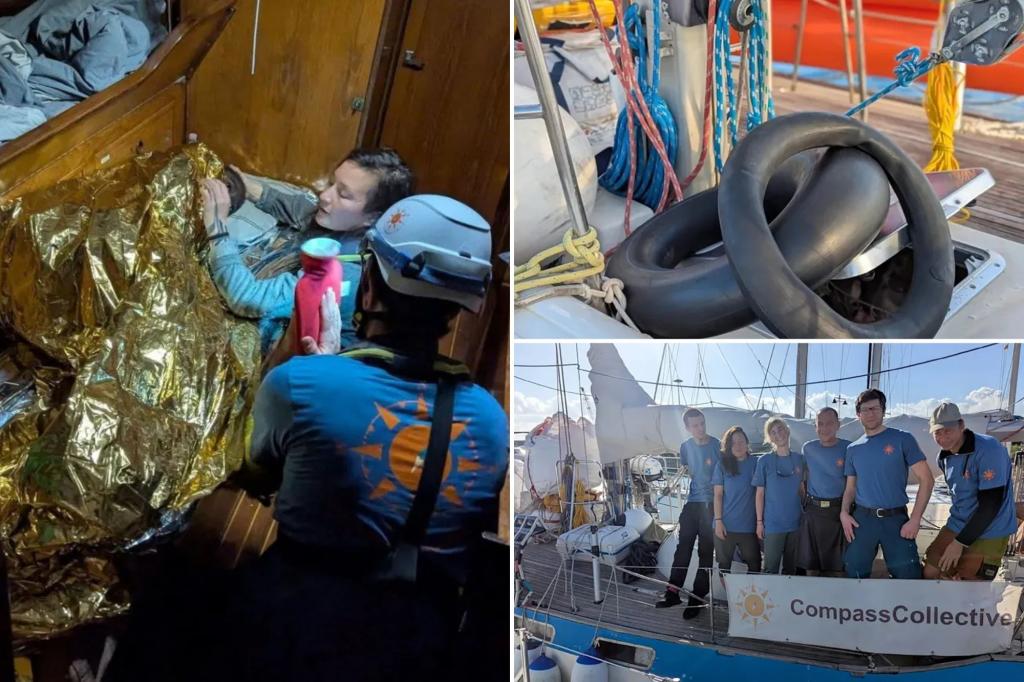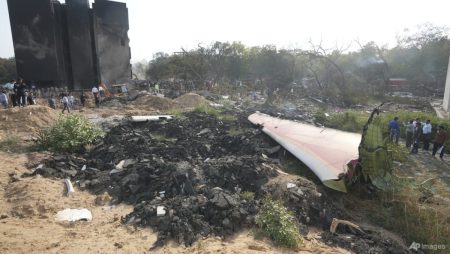The harrowing rescue of an 11-year-old girl from Sierra Leone, the sole survivor of a tragic shipwreck off the Italian island of Lampedusa, casts a stark light on the perilous journey undertaken by migrants seeking refuge in Europe. Found clinging to tire tubes amidst the vast expanse of the Mediterranean Sea, her survival is a testament to human resilience, yet underscores the immense dangers inherent in these desperate crossings. The girl, adrift for three days following the capsizing of her overcrowded metal boat, embodies the countless untold stories of loss and hardship that characterize the migrant crisis. Her rescue, while a beacon of hope, serves as a grim reminder of the urgent need for comprehensive and humane solutions to address the root causes of migration and ensure the safety of those seeking a better life.
The young girl’s ordeal began in the Tunisian port city of Sfax, a major departure point for migrants attempting the treacherous crossing to Europe. Her vessel, a precarious metal boat carrying 45 individuals, succumbed to the unforgiving forces of a storm, leaving her as the only known survivor. The German rescue charity, CompassCollective, encountered the girl by chance during another rescue operation, her faint cries piercing the darkness of the early morning hours. Wearing a life jacket and clinging desperately to two tire tubes, she was pulled from the sea, a symbol of both fortitude and vulnerability. Her rescue underscores the critical role of non-governmental organizations in providing vital search and rescue operations in the Mediterranean, filling a void often left by strained governmental resources.
Lampedusa, a small Italian island closer to North Africa than the Italian mainland, has become a frequent landing point for migrants traversing the central Mediterranean route. Upon arrival, the girl received immediate medical attention before being transferred to a migrant holding center. There, she received further care and support from the Italian Red Cross, providing a temporary haven amidst the trauma of her experience. Her story highlights the complex challenges faced by countries like Italy, often on the front lines of the migrant crisis, grappling with the influx of arrivals while striving to provide adequate humanitarian assistance. The girl’s solitary survival also intensifies the emotional toll on rescue workers and aid organizations, who witness firsthand the devastating consequences of these perilous journeys.
The central Mediterranean route, stretching between North Africa and Italy, has become synonymous with tragedy. Thousands of migrants have perished attempting this crossing, making it one of the deadliest migration routes globally. The International Organization for Migration has documented over 24,300 deaths and disappearances since 2014, a stark reminder of the human cost of this ongoing crisis. The girl’s survival, while miraculous, serves as a poignant counterpoint to these grim statistics, highlighting the precariousness of life for those undertaking these journeys. The overcrowded boats, often unseaworthy and lacking basic safety equipment, are particularly vulnerable to the unpredictable weather conditions and the vastness of the sea.
Concerns have been raised about the potential loss of three additional migrant boats attempting the same crossing. NGO Mediterranea has appealed for urgent search and rescue operations, emphasizing the moral imperative to protect human life at sea. The fear of further tragedies underscores the need for increased coordination and resources dedicated to search and rescue efforts. This also highlights the limitations of relying solely on non-governmental organizations for rescue operations, underscoring the necessity for greater governmental involvement and international cooperation to address this humanitarian crisis. The lack of a comprehensive and coordinated response system leaves countless migrants vulnerable to the dangers of the sea, with many lives lost without a trace.
Italy’s stance on immigration, characterized by stricter border control measures, aims to deter migrant arrivals. The government argues that their policies have contributed to a decrease in landings compared to the previous year. However, critics argue that such policies may be pushing migrants towards even more dangerous routes, increasing the risk of tragedies like the one experienced by the young girl from Sierra Leone. While the number of arrivals may have decreased, the inherent dangers of the crossing remain, and the humanitarian crisis continues unabated. The focus on border control, while understandable from a national perspective, must be balanced with the need to uphold international humanitarian law and ensure the protection of vulnerable individuals seeking refuge. A comprehensive solution requires addressing the root causes of migration, providing safe and legal pathways for asylum seekers, and enhancing international cooperation in search and rescue operations.










